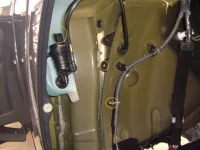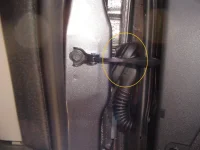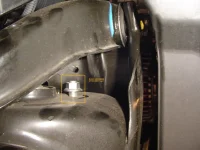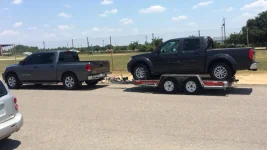You don't know what you don't know... that's all I am gonna say.Considering very large motors are near 60%
You are using an out of date browser. It may not display this or other websites correctly.
You should upgrade or use an alternative browser.
You should upgrade or use an alternative browser.
Nissan introduces engine with 50% thermal efficiency
- Thread starter Gokhan
- Start date
You don't know what you don't know... that's all I am gonna say.
Carnot theoretical is 100% if output leaves at absolute zero and is meaningless in terms of comparing production engine designs at ambient temperatures.
What way would you prefer it be measured?
Wärtsilä 31 (2015) Is around 165g/kwhr which is beyond 50%
What efficiency would you attribute to 165g/kwhr?
4WD
$50 site donor 2025
Nice engine … see them on some generator sets once in a while …Carnot theoretical is 100% if output leaves at absolute zero and is meaningless in terms of comparing production engine designs at ambient temperatures.
What way would you prefer it be measured?
Wärtsilä 31 (2015) Is around 165g/kwhr which is beyond 50%
What efficiency would you attribute to 165g/kwhr?
Whaaat?Carnot theoretical is 100%
No, what the thermodynamic law says is that ANY cycle (motor) cannot have a better thermal efficiency than a theoretical Carnot cycle that uses the same max and min temperatures.
That is:


This is a Carnot cycle taking place between a hot reservoir at temperature TH and a cold reservoir at temperature TC.
Diesel cycle was developed to be the closest to Carnot cycle. But we don't live in an ideal world, we have friction and heat loses...
To bring in an example of that special marine low rpm Diesel (720-750 rpm) with huge 32L cylinders (each of them), to "prove" that a small Otto engine can also reach 50%... it's just a huge stretch.
PS: I worked with marine diesel engines used as power plant generators. They never achieve the "marketed" efficiencies either, for a variety of reasons.
Last edited:
- Joined
- Jun 2, 2002
- Messages
- 4,623
Anthony, my 2017 Nissan Frontier with the 2.5 liter engine and 5 speed manual gearbox has needed a battery at the 2 year mark, a viscous fan clutch at the 2 year mark, complete adjustment of emergency brake on the passenger side of vehicle when new, and the assembly was incomplete. The factory battery has only a 1 year warranty and the fan clutch has a 36,000 mile warranty that I had surpassed by a mere 1200 miles at time of failure. Therefore, no warranty coverage was offered.What issues has your Frontier had?
The nuts that attach the front strut on the passenger side were not tightened down, the windshield washer fluid pump was not plugged in, the grommet for the door wiring was not installed, and I'm sure I had a half dozen more issues that I tended to. The vehicle was very poorly assembled and quality control at the Mississippi facility did not catch any of the issues. Then, the vehicle was PDI'd at the dealership and they caught none of the assembly issues (not speaking of the battery and fan clutch).
These photos were taken within the first week of ownership. I purchased the vehicle in Nashville, TN., and live in Atlanta, Ga. and the dealership experience has been so horrible that I just dealt with the issues rather than subjecting myself to the incompetence of the circus clowns at the local franchise.
Nissan will NEVER receive another penny of mine.
Attachments
Nevermind, I just Googled it myself. Half a Buick V6, 250 hp, 51 mpg.
https://www.motortrend.com/how-to/hrdp-1009-what-ever-happened-to-smokeys-hot-vapor-engine/
https://en.wikipedia.org/wiki/Lean-burn
JTK
$100 Site Donor 2025
Anthony, my 2017 Nissan Frontier with the 2.5 liter engine and 5 speed manual gearbox has needed a battery at the 2 year mark, a viscous fan clutch at the 2 year mark, complete adjustment of emergency brake on the passenger side of vehicle when new, and the assembly was incomplete. The factory battery has only a 1 year warranty and the fan clutch has a 36,000 mile warranty that I had surpassed by a mere 1200 miles at time of failure. Therefore, no warranty coverage was offered.
The nuts that attach the front strut on the passenger side were not tightened down, the windshield washer fluid pump was not plugged in, the grommet for the door wiring was not installed, and I'm sure I had a half dozen more issues that I tended to. The vehicle was very poorly assembled and quality control at the Mississippi facility did not catch any of the issues. Then, the vehicle was PDI'd at the dealership and they caught none of the assembly issues (not speaking of the battery and fan clutch).
These photos were taken within the first week of ownership. I purchased the vehicle in Nashville, TN., and live in Atlanta, Ga. and the dealership experience has been so horrible that I just dealt with the issues rather than subjecting myself to the incompetence of the circus clowns at the local franchise.
Nissan will NEVER receive another penny of mine.
I remember being shocked at those issues back when you first posted it. Do you still own the truck? If so, hopefully it's treated you well since.
FWIW, my FIL has a 2017 Frontier 4x4 crew cab, long bed that he bought as an ex-rental in 2018 w/ 8K miles on it. No issues with it so far, but he's only got around 20K miles on it. He insisted on a Frontier because he used them as company vehicles before he retired and they would put them through some ridiculous use w/out issue.
Wow. I definitely understand your frustration. I purchased this Titan and Frontier in 2015. Neither have had any problems. Both have over 90k and both also built in Canton. Maybe just a rough week when they built yours lol.Anthony, my 2017 Nissan Frontier with the 2.5 liter engine and 5 speed manual gearbox has needed a battery at the 2 year mark, a viscous fan clutch at the 2 year mark, complete adjustment of emergency brake on the passenger side of vehicle when new, and the assembly was incomplete. The factory battery has only a 1 year warranty and the fan clutch has a 36,000 mile warranty that I had surpassed by a mere 1200 miles at time of failure. Therefore, no warranty coverage was offered.
The nuts that attach the front strut on the passenger side were not tightened down, the windshield washer fluid pump was not plugged in, the grommet for the door wiring was not installed, and I'm sure I had a half dozen more issues that I tended to. The vehicle was very poorly assembled and quality control at the Mississippi facility did not catch any of the issues. Then, the vehicle was PDI'd at the dealership and they caught none of the assembly issues (not speaking of the battery and fan clutch).
These photos were taken within the first week of ownership. I purchased the vehicle in Nashville, TN., and live in Atlanta, Ga. and the dealership experience has been so horrible that I just dealt with the issues rather than subjecting myself to the incompetence of the circus clowns at the local franchise.
Nissan will NEVER receive another penny of mine.
The torque converter just failed on my dads 01 supercharged frontier. It has 329,000 miles on the original auto trans.
Attachments
The direct injected engines are designed to do exactly that lean burn with help of controlled injection pattern.
However they have issues with carbon deposits on the valves, so Ford and Toyota added another set of injectors on the back side of the valves (traditional spot for port injected cars) and run those partially to clean the deposits.
Gokhan
Thread starter
Toyota's current hybrid internal-combustion engines run at 42% efficiency, a number that should increase with their next-generation engines. If Nissan has a special prototype engine that runs at 46% efficiency to charge a battery, that sounds reasonable. They are saying that they will add an additional 4% efficiency using a waste-heat recovery system, which is typically a thermoelectric generator (TEG), and that sounds plausible, too.It's a lie, marketing. That's not thermal efficiency, that e-Power is a thermal motor driving a generator.
No real life thermal cycle can be more efficient than Carnot theoretical cycle.
https://en.wikipedia.org/wiki/Carnot_cycle
The engine itself is 50% efficient.It's a lie, marketing. That's not thermal efficiency, that e-Power is a thermal motor driving a generator.
No real life thermal cycle can be more efficient than Carnot theoretical cycle.
https://en.wikipedia.org/wiki/Carnot_cycle
"the most efficient current production engines are closer to 40% thermal efficiency.
in testing, Nissan said it achieved 43% thermal efficiency just by diluting the mixture (using exhaust-gas recirculation), 46% when using lean combustion (meaning more air and less fuel), and 50% when operating the engine at a fixed rpm and load, with waste-heat recovery technologies."
https://www.greencarreports.com/new...iciency-from-engine-for-e-power-hybrid-system
Gokhan
Thread starter
Slight correction there: the waste-heat recovery system is a thermoelectric generator (TEG); so, it is not really part of the internal-combustion engine (ICE). However, since the sole purpose of this engine is to recharge a battery, it effectively adds up to the ICE efficiency. Nevertheless, the heat engine itself, which generates the mechanical energy, is said to have a 46% efficiency in this case.The engine itself is 50% efficient.
"the most efficient current production engines are closer to 40% thermal efficiency.
in testing, Nissan said it achieved 43% thermal efficiency just by diluting the mixture (using exhaust-gas recirculation), 46% when using lean combustion (meaning more air and less fuel), and 50% when operating the engine at a fixed rpm and load, with waste-heat recovery technologies."
https://www.greencarreports.com/new...iciency-from-engine-for-e-power-hybrid-system
No, it is not. The assembly engine/recovery/electric motor might be (but I doubt it will be in reality).The engine itself is 50% efficient.
Like a combined cycle power generation plant.
Heck any combined engine with a electric motor/battery can claim better efficiency if we look it that way.
As for the "constant rpm" - that's another bull. The battery will be discharged with a variable rate, given by driving (stop/go, various speeds) and accessories (A/C, heating, lights, wipers). So the thermal motor load, when the battery is "full", will be variable too, to fulfill those variable loads.
"Constant rpm" means little when you still have to adjust the fuel/air quantities in your engine.
Is that a hybrid system they are talking about?However, since the sole purpose of this engine is to recharge a battery, it effectively adds up to the ICE efficiency.
Like a stop-and-go type of system? Let the battery discharge to some 50% and then start the engine to charge it back at full load?
That would kill the batteries faster.
Last edited:
What is meant by the Ghetto Crown, sounds very racist to me ??Around here Kia, Hyundai, and Chevrolet wear the ghetto crown.
/
/
Maybe by 2050 Nissan will sell its cheap Epower drivetrain in the Americas
https://www.autonews.com/manufacturing/nissan-sees-price-parity-evs-and-e-power-vehicles
Reading all the releases It becomes clear, Epower is meant to make the hybrid drivetrain cheaper than a traditional ice + auto transmission
https://www.autonews.com/manufacturing/nissan-sees-price-parity-evs-and-e-power-vehicles
Reading all the releases It becomes clear, Epower is meant to make the hybrid drivetrain cheaper than a traditional ice + auto transmission
It means it's what the drug addicts/poor people driveWhat is meant by the Ghetto Crown, sounds very racist to me ??
/
/
And there's many white people in the ghetto here. The Mexicans usually go start a landscaping company and some of them have really nice cars and houses.
I think Nissan takes the cake for ghetto crown here.
- Joined
- Apr 25, 2023
- Messages
- 141
What is meant by the Ghetto Crown, sounds very racist to me ??
You haven’t heard of Getto Corp? Crown is the flagship.
/
/
Nissan cars are junk. I have one.You should ask yourself why there are so many Nissan is junk comments. It might open some doors into truth for you.
Great discussion on Sadi Carnot. In college we Americanized his last name to car not. In thermodynamics that’s how we said it. Imagine my surprise when “corrected” at my job.
There are a number of sharp folks here and a few that got the “sink” aspect correct. You know who you are. Thanks for posting that so I don’t have to.
There are a number of sharp folks here and a few that got the “sink” aspect correct. You know who you are. Thanks for posting that so I don’t have to.
Last edited:
Similar threads
- Replies
- 23
- Views
- 16K
- Replies
- 56
- Views
- 29K
- Locked
- Replies
- 10
- Views
- 12K
- Replies
- 38
- Views
- 11K





